In conjunction with Un día en la Tierra [One Day on Earth], the Museo Moderno’s year-long exhibition programme, we are offering a journey across different landscapes, through different accounts and knowledge and, at the same times calls attention to the urgent need to protect the environment and take collective action to save Earth from its own destruction. We must safeguard the memory of the lands and the beings that inhabit them, their images, sounds, roots, rivers and the air we breathe.
Curators: Gabriela Golder and Andrés Denegri
something else” switched to a mixed programme model that consists of a return to live activities at the museum’s emblematic auditorium and the continuation of our online offerings, such as presentations of audio-visual works by different artists via the museum’s YouTube channel.
To close last year’s programme, the digital platform of “The cinema is something else” presented the Julián Brangold’s work, Pathlog.
The video is based on hundreds of pages of notes and recordings of memories, dreams and intense free association writings produced by the artist over the course of three years of writing three pages upon waking every morning. Using 3D animation tools and sound composition, the work recreates imaginaries that shape the artist’s construction of his identity.
Julián Brangold, Pathlog, 2022, 12 min 49 sec
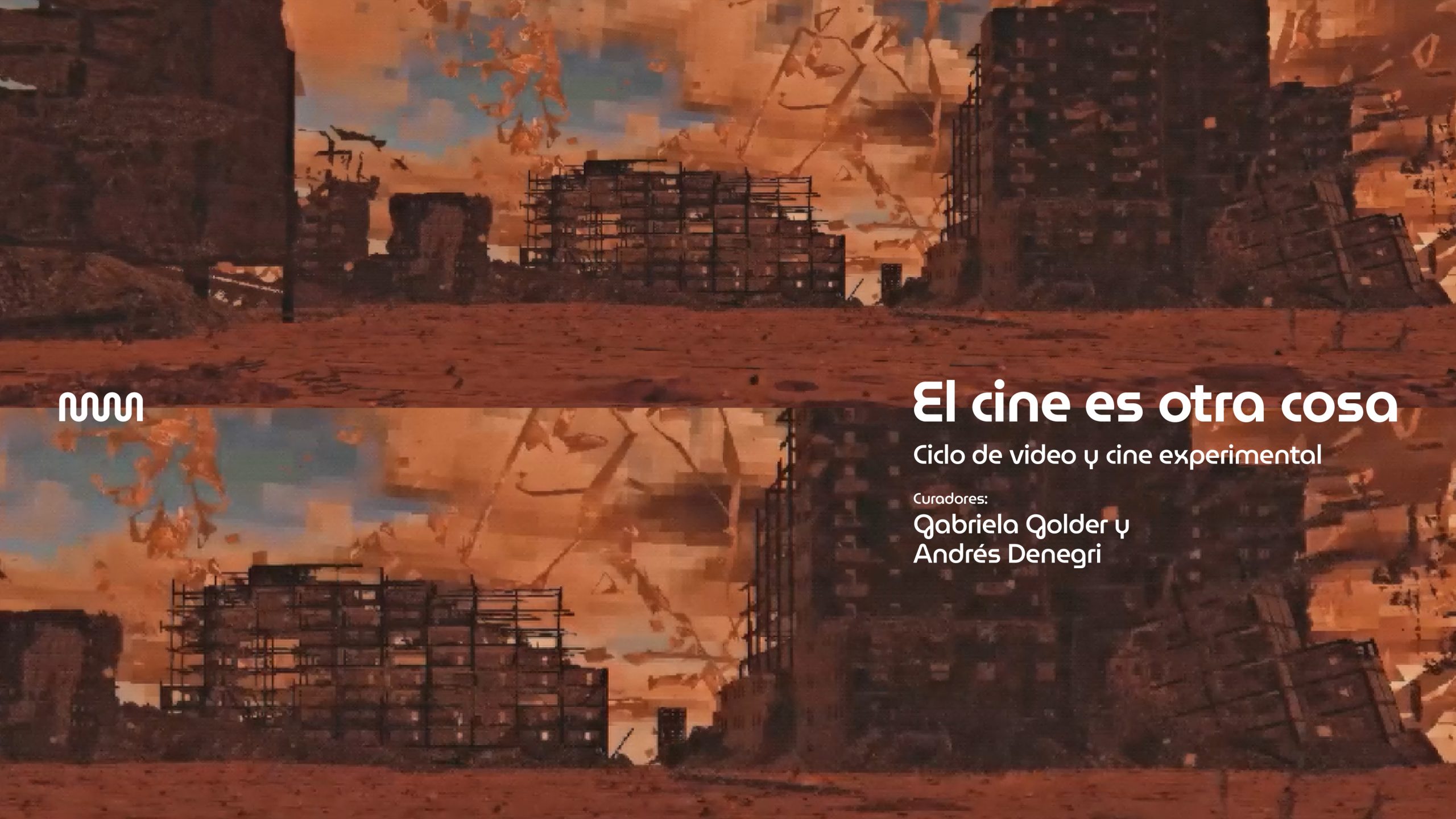
This year’s mixed format cycle of “El cine es otra cosa” [“The cinema is something else”] will see programs presented in the Museo Moderno’s auditorium at the same time that other works by invited artists will be uploaded to the museum’s YouTube channel. It is within that framework that this November we present, in association with the Bienal de la Imagen en Movimiento (BIM), La caída [The Fall], by Claudia Aravena Abughosh. It is a brief audio-visual essay about the relationships between ideas about disaster (“When disaster ensues, it does not arrive; disaster is its own imminence”, says Maurice Blanchot) and the existence of the author herself. The transient nature of the video is marked, from scene to scene, by texts linked to the images, like a montage of attractions.
La caída [The Fall], Claudia Aravena Abughosh
Full HD single-channel video
13 min, 11 s
Claudia Aravena Abughosh (Santiago de Chile, 1968)
Visual artist and academic. Aravena Abughosh is an audio-visual communicator from the Arcos Institute and holds a master’s degree in Cultural Studies from the Universidad ARCIS (University of Arts and Social Sciences). She has developed a prolific body of work in video and installation addressing themes related to uprootedness, otherness and contemporary social imaginaries. She has received numerous grants and recognitions. Her work is held in several collections, including NBK (Berlin), the Visual Arts Collection of the Galería Gabriela Mistral, the National Council of Culture and the Arts of Chile, and the Visual Arts Collection of La Caixa (Barcelona). She is currently a lecturer in the Master of Media Arts programme at the Universidad de Chile, an associate professor at the Universidad Diego Portales and a lecturer at the Pontificia Universidad Católica de Valparaíso.
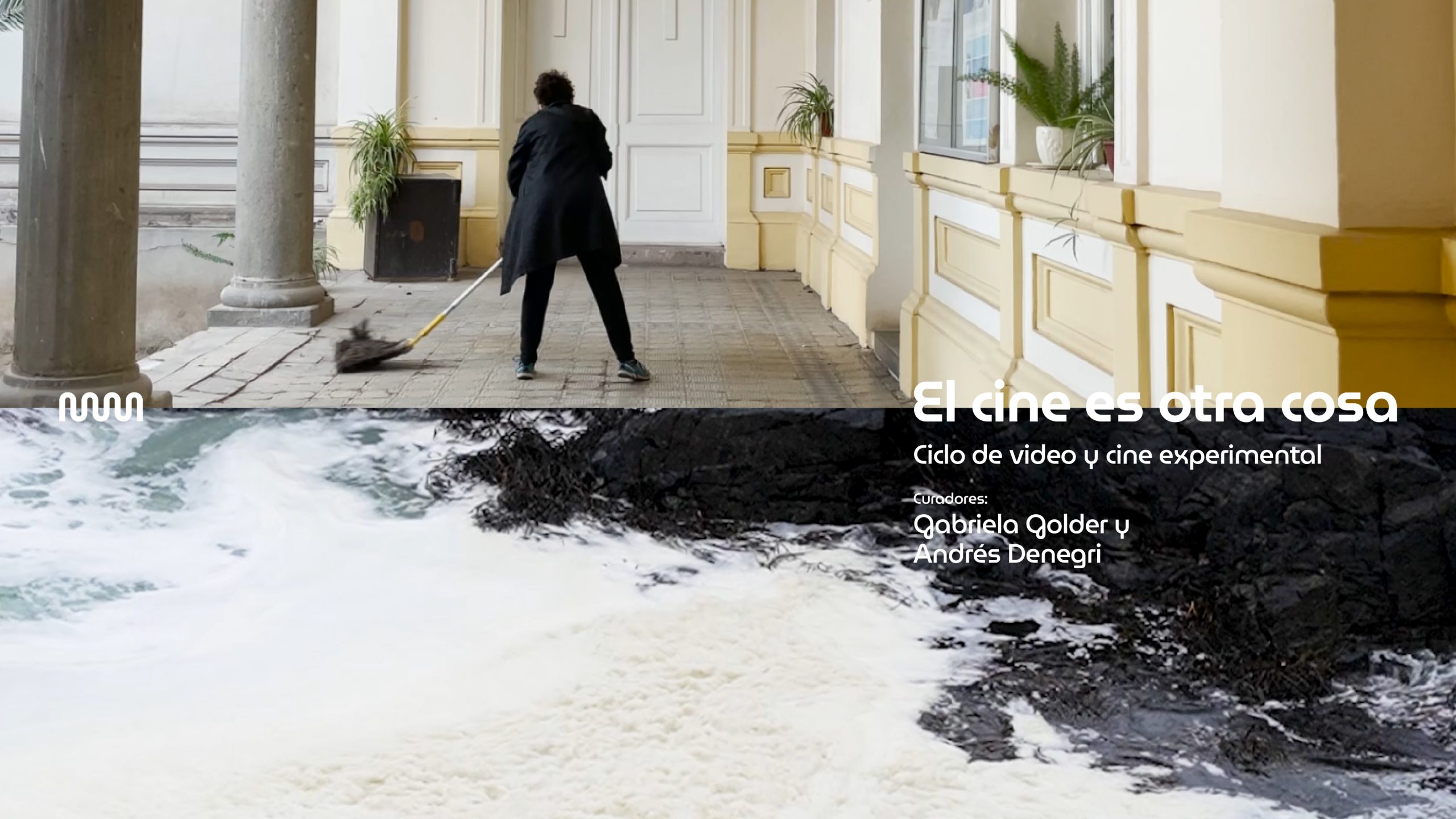
Over the course of the year and taking advantage of the mixed format of this cycle of “El cine es otra cosa” [“The cinema is something else”], some of the artists whose audio-visual works are being screened at the museum will present more of their work on the Moderno’s YouTube channel.
On this occasion, we present Para no gritar [So as not to scream], a joint creation by Gustavo Galuppo and Carolina Rimini in which they express poignant, existential reflections based on the intertwining of different aesthetic film and poetry excerpts that are part of our universal cultural heritage.
Para no gritar [So as not to scream], 2022
by Gustavo Galuppo and Carolina Rimini
7 min
Insistence, return and exhaustion: unsuccessful attempts to reach something truthful in the “after” of images.
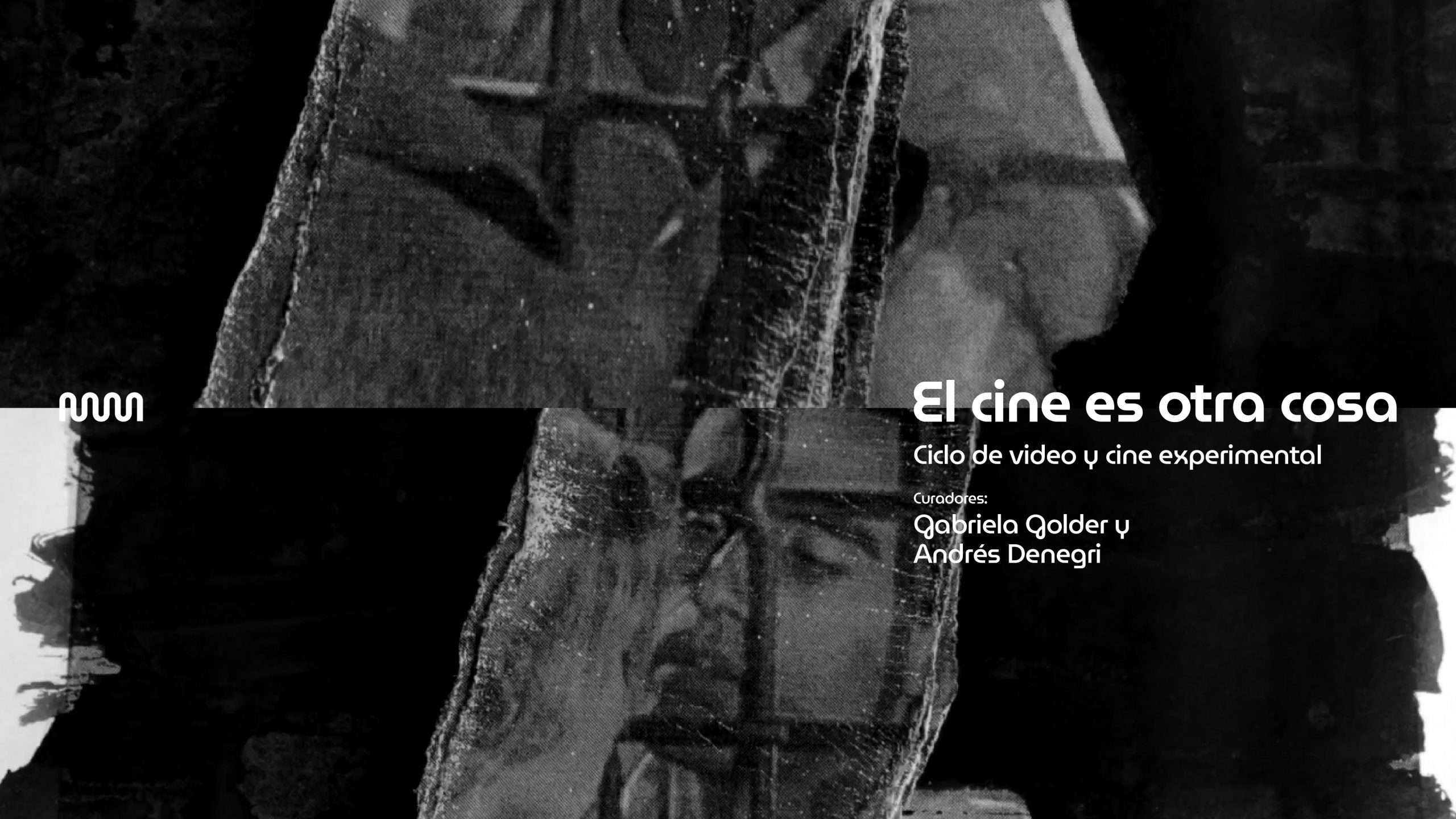
Gustavo Galuppo. Tríptico Arcaica (en dos versiones performáticas) [Archaic Triptych] (in two performative formats)
The human body, its presence, identity, the marks left by its actions, and the significance of its gestures are all defining elements in contemporary art and central themes of many of the exhibitions at the Museo Moderno this year. In line with these themes, El cine es otra cosa [The cinema is something else] presents Gustavo Galuppo’s Tríptico Arcaica (en dos versiones performáticas) [Archaic Triptych (in two performative formats)].
Tríptico Arcaica consists of three videos presented as points on an imaginary personal journey. The three parts of the journey, “Vestigia”, “Antigua” and “Ungida” [“Vestige,” “Ancient” and “Anointed”], do not reach a conclusion; rather, they are interrupted by a prayer. The journey unfolds from questions regarding the origin of everything, or indeed, its impossibility or non-existence. Somewhere between observation and invention, traces and impressions come together in the manner of an incongruous travel diary, to invent, on the fly and at long last, a story.
Given the evidently unfinished nature of the work, it can be shaped continuously and in different ways. In these performative screenings, there will be two different performative interventions of the filmed work: one will take place in person, and the other will be remote. In each, Galuppo not only points the camera at himself as he creates the work; he also intrudes on, interrupts, boycotts and supplements it as it is projected on screen. For two nights, Galuppo puts himself between the screen and the audience and brings the audience into his own home, in an experience that crosses the lines between cinema, theatre, performance and live video.
Friday, 14 October at 7 p.m. Tríptico Arcaica – Fábulas [Archaic Triptych – Fables]
Video and live performance
2022, 65 min
Produced by Gustavo Galuppo Alives
In this first presentation, there will be a live intervention of the filmed work. The artist will be in the room during the screening to add new texts and commentaries to those of the existing work, as well as to perform live sound and music. He will also recite ancient fables that may enter into a dialogue with the journey shown in the triptych.
Saturday, 15 October at 7 p.m. Tríptico Arcaica – Juegos [Archaic Triptych – Games]
Video and telematic performance
2022, 60 min
Produced by Gustavo Galuppo Alives
In the second presentation, Galuppo will intervene in the original work remotely, via webcams he has installed at his home in Rosario. This will cause random irruptions of family life and an interplay of different objects, texts and audio-visual instruments.
BIO
Gustavo Galuppo Alives (Rosario, 1971). Audio-visual artist. Since 1998, Galuppo has frequently shown his experimental videos and film essays at different exhibitions and shows and has received numerous awards and distinctions. He also researches film theory and history and has published essays in books and specialised journals. He teaches at the Universidad Nacional de Arte (UNA) and the Universidad Católica de Santa Fe (UCSF). In 2018, he published his first book, El cine como promesa (Sans Solei, Spain-Argentina), which was followed in 2020 by Los mecanísmos frágiles: Imágenes desde la vida dañada (Ver-Poder, Argentina), and, in 2022, by Después de Godard: La legitimidad de lo incierto (Ciudad Gótica, Argentina). He teaches courses, seminars and workshops at different institutions and independent organisations in Argentina, Colombia, Peru and Bolivia. He lives and works in Rosario.
September’s programme is dedicated to filmmaker Alejandra Almirón. It includes her latest film Llamarada [Flare] and an audiovisual performance created together with Maximiliano de la Puente. In the online edition, we will show the film Equipo verde. Entrenamiento adolescente para un documental [Green Team: Teenaged training for a documentary], created by and starring Almirón. It is an autobiographical work that deals with the traumas of adolescence and school during the difficult times of the last military dictatorship.
Alejandra Almirón, Equipo verde. Entrenamiento adolescente para un documental, 2012-2013, HD, 71 min.
“1978. The perfect memory of high school is the gymnasium yard and the physical education teacher. The green team was made up of those of us who didn’t make the normal teams: Cristina, Elvira and me. We were the first group of young people who started high school after the genocide and were thus deprived of any collective project, i.e. teens designed as the military wanted. Do we belong to a generation? Or are we simply the one that came next?”
Alejandra Almirón
Project supported by INCAA (Vía Digital)
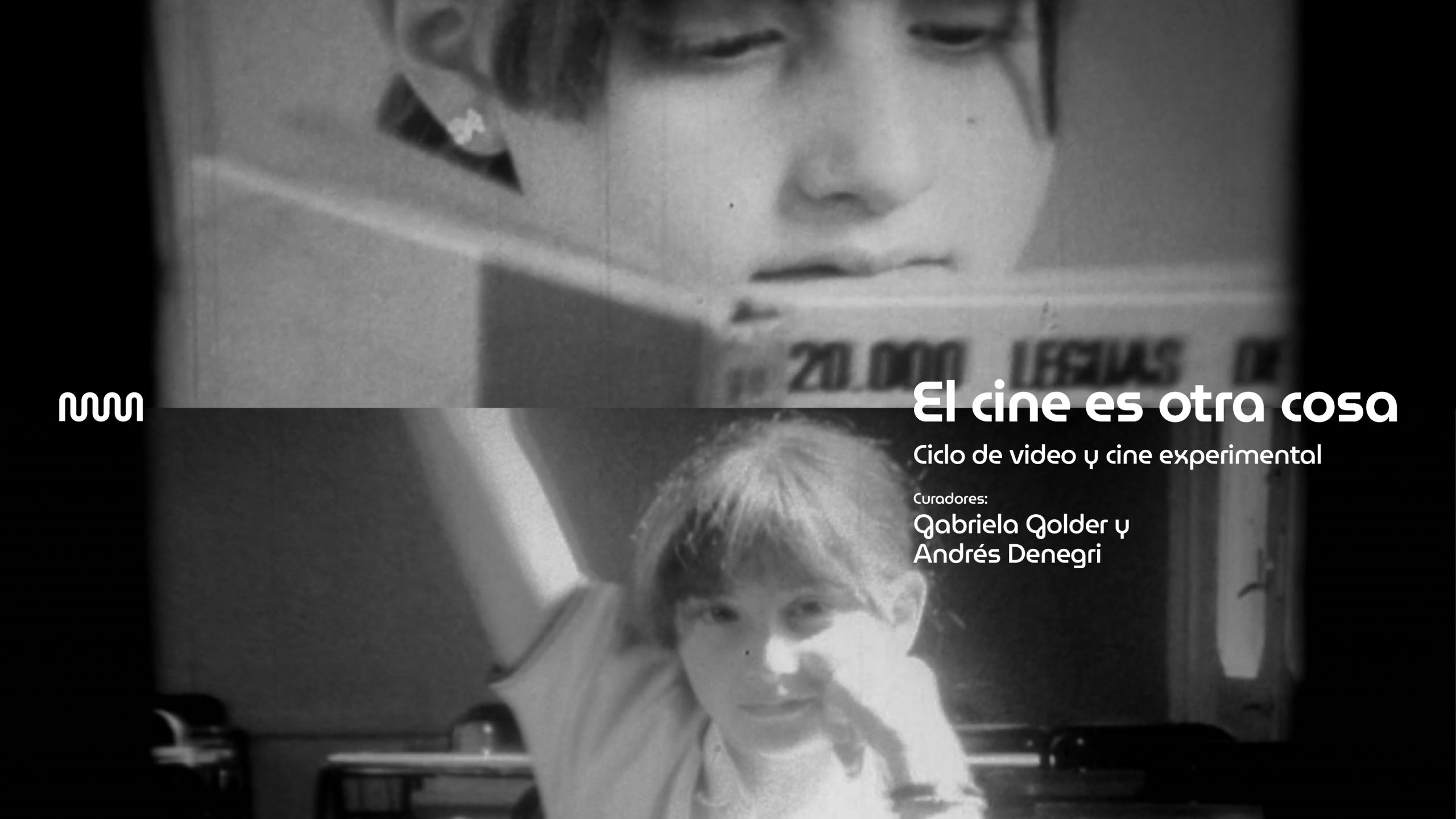
In 2022, the Museo Moderno’s experimental video and cinema cycle “El cine es otra cosa” [“The cinema is something else”] is back, now in a hybrid format: the in-person activities at the museum auditorium have returned are now accompanied by our continued online offerings.
Over the course of the year, some of the artists whose audiovisual works are screened at the museum will also present more work of their authorship on the Moderno’s YouTube channel. In this way, our audience from beyond Buenos Aires can continue to enjoy our programming, while those who have visited us in-person will be able to continue their museum experience at home.
The first programme of the year, “¡Qué momento!” [“What a time!”] includes works by Narcisa Hirsch and Roberto Barandella that reveal images of a time during which transgression played out in the highly repressive context of the 1970s and early 1980s. In the online edition of the cycle, we will watch a central piece in the history of Argentinean independent video, Ciudad dormitorio [Commuter Town]. This short audiovisual work provides a picture of society in the 1990s, when democracy was firmly established in Argentina and state terrorism something that belonged to the past. Even so, the fears of that dark period continue to be felt in the work.
Roberto Barandalla and Eduardo Yedlin, Ciudad dormitorio, 1990, 9 min, 40 s.
Complejo Habitacional Lugano 1 and 2, southwest Buenos Aires, 1990. What do the inhabitants of a commuter town dream of? Do the gigantic buildings that surround them also inhabit their dreams?
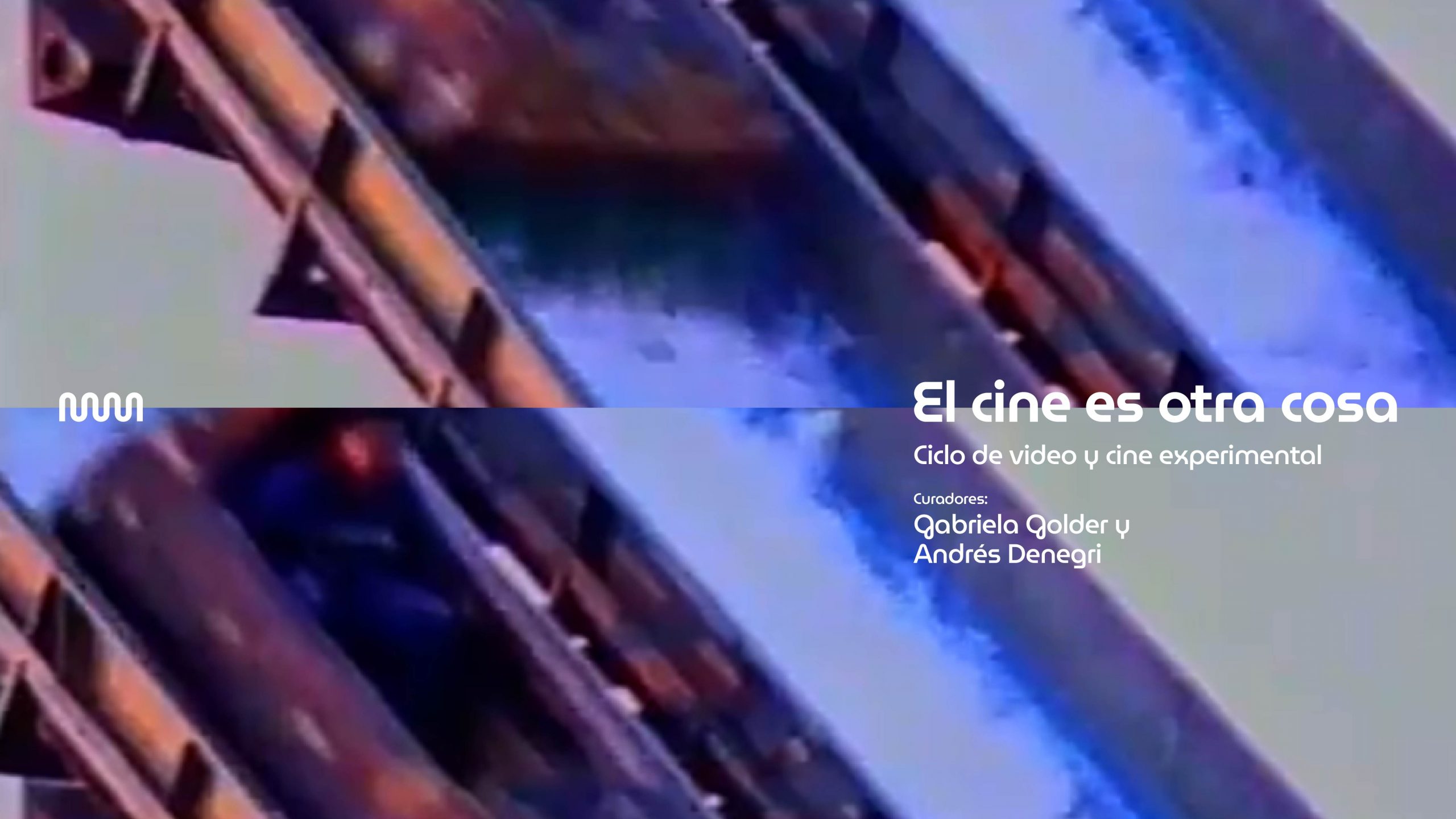
What a time!
In close dialogue with the exhibitions currently on show in the museum’s galleries, in July, “El cine es otra cosa” [The cinema is something else] presents an audio-visual journey through the local underground scene during a critical period of Argentina’s history. Through works by Narcisa Hirsch and Roberto Barandalla, images reveal a time in which transgression occurred in a highly repressive context: avant-garde expressions of new political, emotional and aesthetic values faced a conservative climate of state intolerance. Friendship, love and political commitment exercised as part of a collective creation show an intimate universe that allows for a celebration of life, aesthetic radicalism, and the free exercise of dissidence.
Thursday 28/7 at 7 pm. Narcisa Hirsch: la amistad como lenguaje [Friendship as Language]
While Narcisa Hirsch is known for being a pioneer of Argentinian experimental cinema, it is important to remember that this characterisation goes beyond her artistic production. Not only is she a filmmaker (as well as a producer of performances, happenings, photographs and works in other art forms), since the time she produced the films included in this programme through to today, she has been known as a dynamic agent who brings together the social and the emotional. Her activities have had historic results, as she played a central role in founding the first local experimental film scene, as is reflected in much of her film production.
It is extremely enriching to be able to see these films with the aforementioned perspective in mind because it allows us to understand how, for Narcisa Hirsch, friendship is a substantial part of the raw material from which she produces her work. There is love in these films.
Marabunta, 1967, 16 mm, 8 min.
A documentary about the happening of the same name that took place at the Coliseo theatre in Buenos Aires on 3 October 1967. It was a ceremony of anthropophagy that took place with a group eating around a four-metre skeleton completely covered with food, while live pigeons and parrots painted in phosphorescent colours flew out from its interior.
Retrato de una artista como ser humano [Portrait of an artist as a human being], 1973, 16 mm, 16 min.
An experimental documentary by the artist that shows several happening she held over the years together with Marie Louise Alemann and Walther Mejía. Like a ritual, the artists throw the different items used in their artistic activities into the river.
Taller [Workshop], 1971, 16 mm, 10 min.
While looking at a still image on the wall of a room, the artist’s voice is heard describing to a man what cannot be seen.
Homecoming, 1978, Super 8, Black and white and colour, 21 min. Video re-release: 2021.
A young couple locked in a room silently interacts as she recalls her life from birth to the arrival of her first love.
Biography:
Narcisa Hirsch (1928, Berlin) Argentinian by choice. Hirsch is a filmmaker with a long career in the field of experimental cinema. In the 1960s and 1970s she expanded her artistic activity to include installations, objects, performances, graffiti and urban interventions. Her works focus on themes such as love, birth and death, or questions about the female condition, which she recreated through a particularly intimate language of images, with a marked visual and sound poetry. To date, she has made more than 30 films in Super 8, 16 mm and video formats, including features, shorts and documentaries. She has published the books of essays La pasión según San Juan, el olvido del ser – together with philosopher Luis Jalfen – and Aigokeros.
Thursday 29/7 at 7 pm. El TIT, el TIC y un tal Beto Sánchez [The TIT, the TIC and a certain Beto Sánchez].
Through the eyes of Roberto Barandalla comes this apex of the crossroads between avant-garde film and theatre.
In this contemporary documentary made from rescued footage of a short film by a student and a roll of Super 8 footage that was thought to be lost comes a social landscape of pre-democratic times that is rarely shown in with such detail and intimacy.
It shows complicated times, in which Roberto Barandalla was present with his camera in hand, even when in hiding, filming the elements that make up this record of a universe defined by youthful energy, political engagement and the underground culture.
Roberto Barandalla, Darío Schvarsztein, Un glorioso fracaso [A Glorious Failure], 2012, 27 min. *
In 1981, a group of young artists travelled to São Paulo for the Alterarte II Festival, which brought together alternative avant-garde art groups from different disciplines at the Universidade de São Paulo (USP) campus. At the close of the festival, members of TIT (the Taller de Investigaciones Teatrales), from Buenos Aires, and Grupo Cucaño, from Rosario, staged a street intervention that would be filmed in Super 8 by TIC (the Taller de Investigaciones Cinematográficas), a group to which one of the directors of the documentary belonged. The performance, in which some 30 people participated, consisted of faking a massive breakdown around different points of the Plaza da República market, in the centre of São Paulo. The slogan of the theatre group, “Los argentinos traen la peste” [“The Argentinians bring the plague”], was taken from a text by Antonin Artaud. Everything ended badly (or well). Ambulances and the police arrived on the scene due to the chaotic crowd. The farce unmasked, many of the members of the group were arrested and eight of them were deported.
* Produced for the exhibition Perder la forma humana [Losing the Human Form], at the Museo Reina Sofía in Madrid.
Roberto Barandalla, Rollito aparecido [Found Roll], 1981, Super 8, 2 min. 45 s. Projected in original medium.
A few years after Un glorioso fracaso, the lost roll of the Super 8 film appeared in the house of the mother of one of the members of the film group. It wasn’t related to the trip to Brazil, but to an activity that took place almost in parallel in Buenos Aires in March 1981. On that occasion, the TIT was going to stage Lágrimas fúnebres, pompas de sangre [Funerary Tears, Bloody Rites], a play based on Jean Genet’s novel Pompes funèbres [Funeral Rites], at the recently inaugurated Picadero theatre. Members of the TIT pasted hundreds of posters stating “Aquí cayó un joven” “Here fell a young man” all over the centre of Buenos Aires in a macabre promotion of the play. Minutes before the performance, the owner of the theatre decided to cancel the show due to a bomb threat. The play was never performed. Rollito aparecido shows the moment when Rubén Gallego Santillán, the director of TIT, standing on a car in a passageway near the theatre, speaks to some 200 people waiting to enter the theatre. A few months later, in August, when the anti-dictatorial theatre cycle “Teatro Abierto” [“Open Theatre”] began, the same theatre was completely destroyed in an attack.
Roberto Barandalla, El amor vence [Love Wins], 1980, Super 8, 12 min. 30 s.
In the words of Roberto Barandalla: “The only street graffiti that could be seen around Barrio Norte in 1979 when I arrived in the city to study film-making were ones that said “Love wins” with little birds and hearts painted in aerosol. All the others had been erased. The film deals with what today would be called “non-deconstruction”, an “empowered” woman, the fantasy of a “femicide” – words that did not exist at that time – images that tell of a crisis in a couple in which love could never win”.
Biography:
Roberto Barandalla (1958, Rosario) is a self-taught artist who, during the military dictatorship, while studying film-making, founded the Taller de Investigaciones Cinematográficas (TIC) as part of an avant-garde Trotskyist art collective. He worked as a journalist for Cerdos & peces and rock music magazines. In the late 1980s, he was a member of the group X Video, working on his first documentaries, video art and video clips that made the rounds at the Instituto de Cooperación Iberoamericana (ICI, Buenos Aires) in the early 1990s. He worked as a television producer at Edición Plus and was a researcher for Fabián Polosecki’s series, El otro lado. He has produced more than a dozen journalistic films for Endemol and scripted more than ten feature-length documentaries. He is currently a documentary and television scriptwriter and lecturer at the Universidad del Cine (UCINE, Buenos Aires).